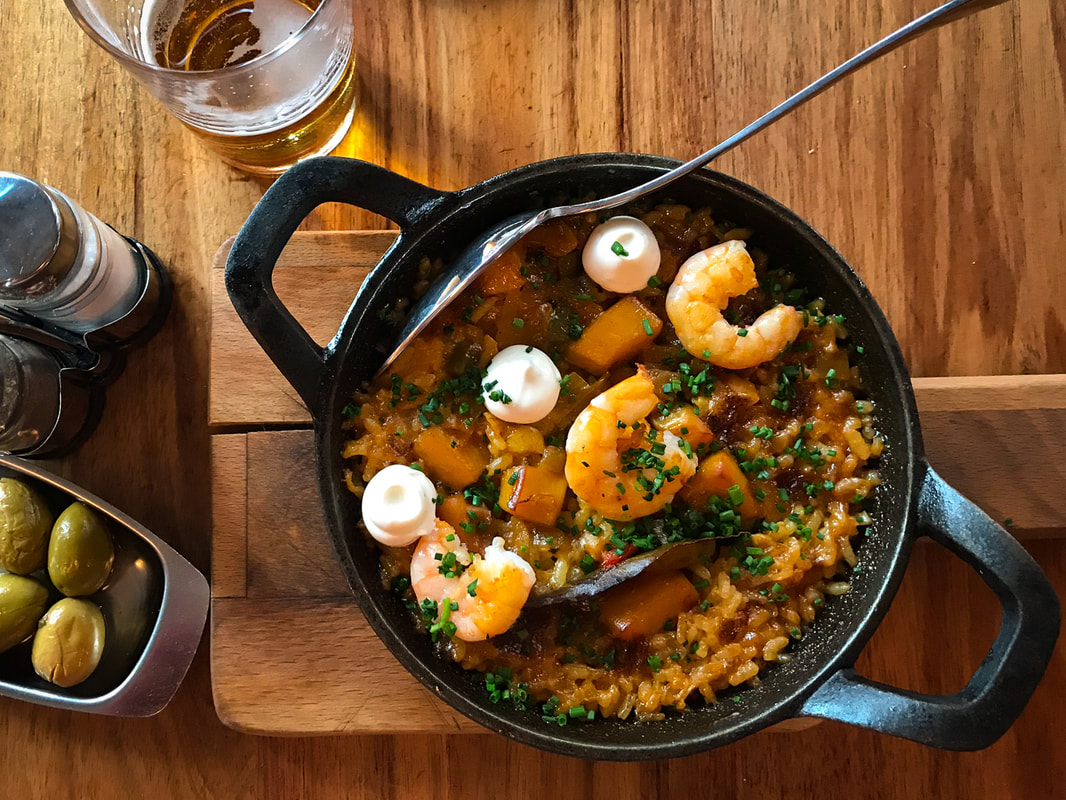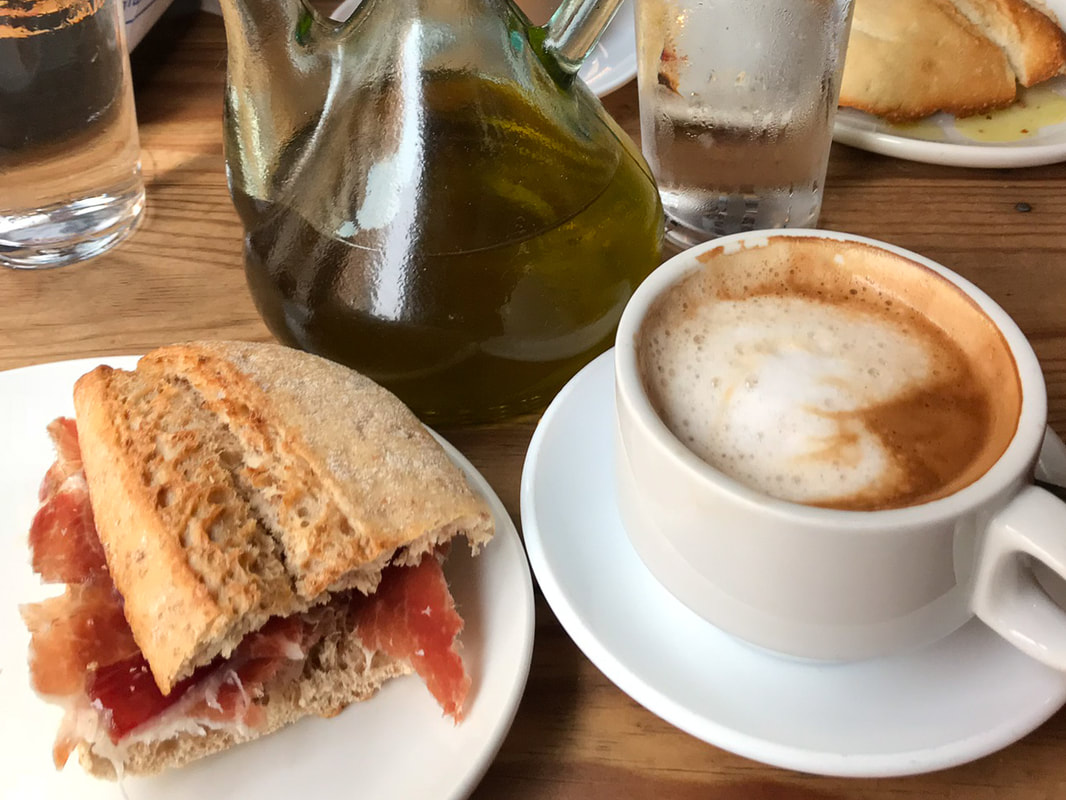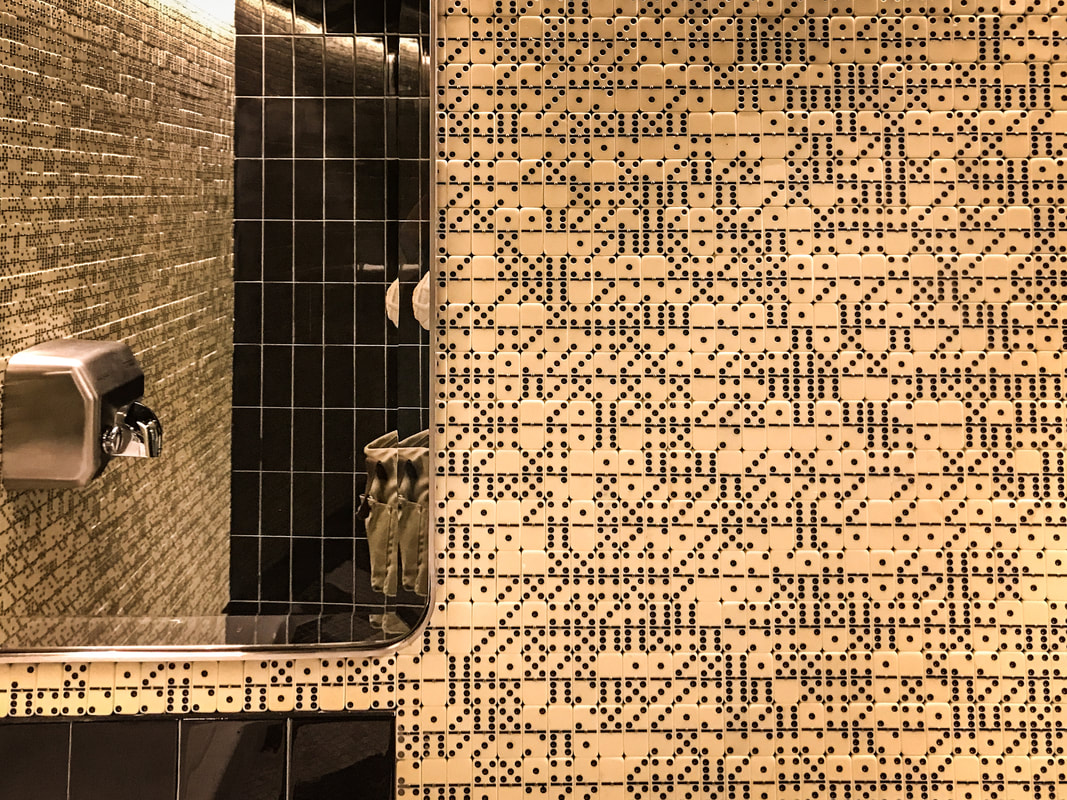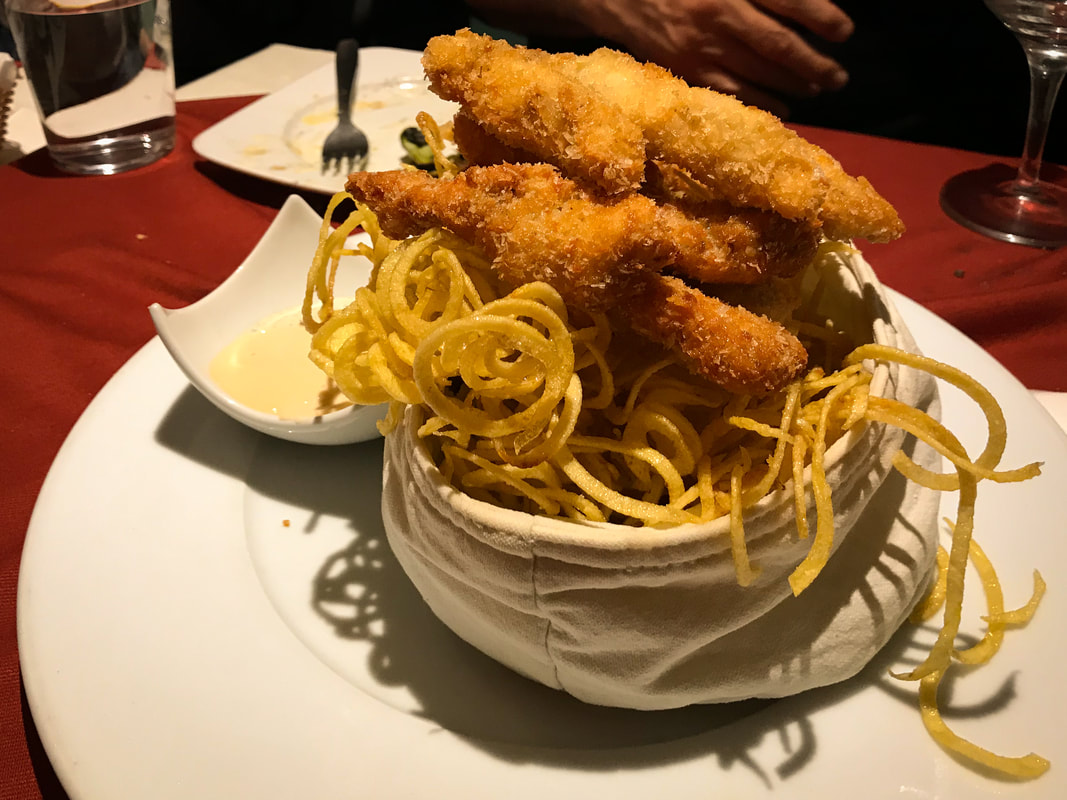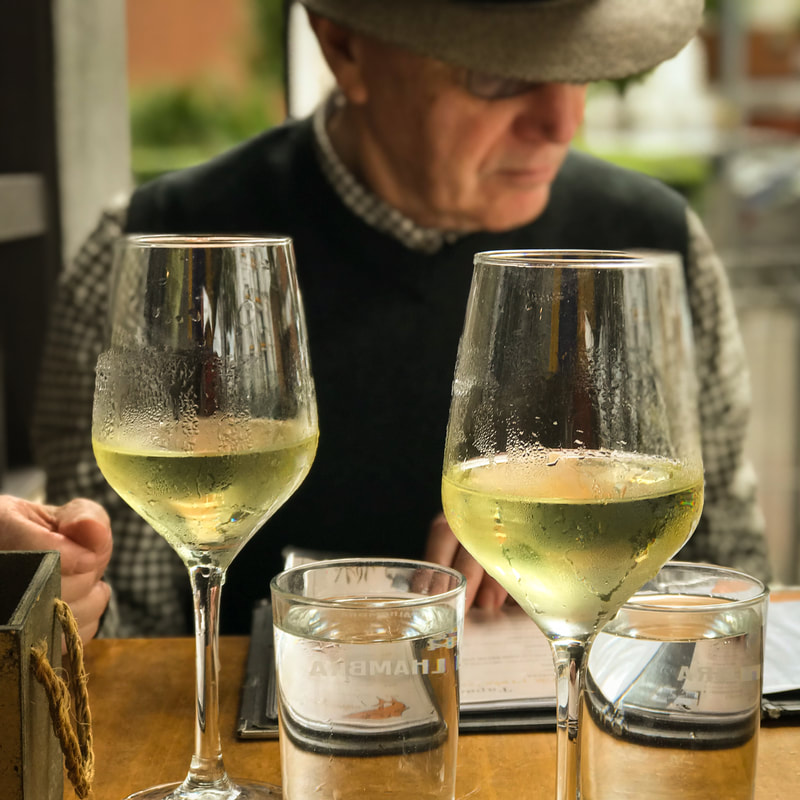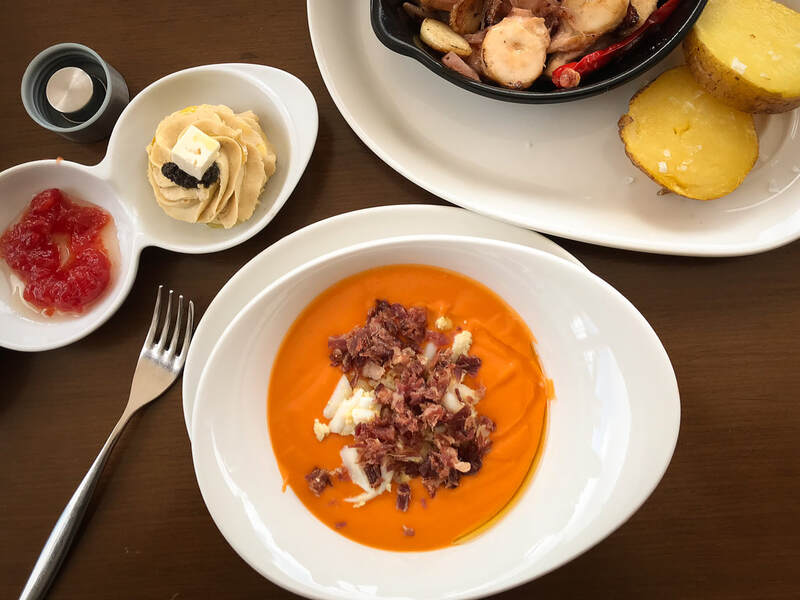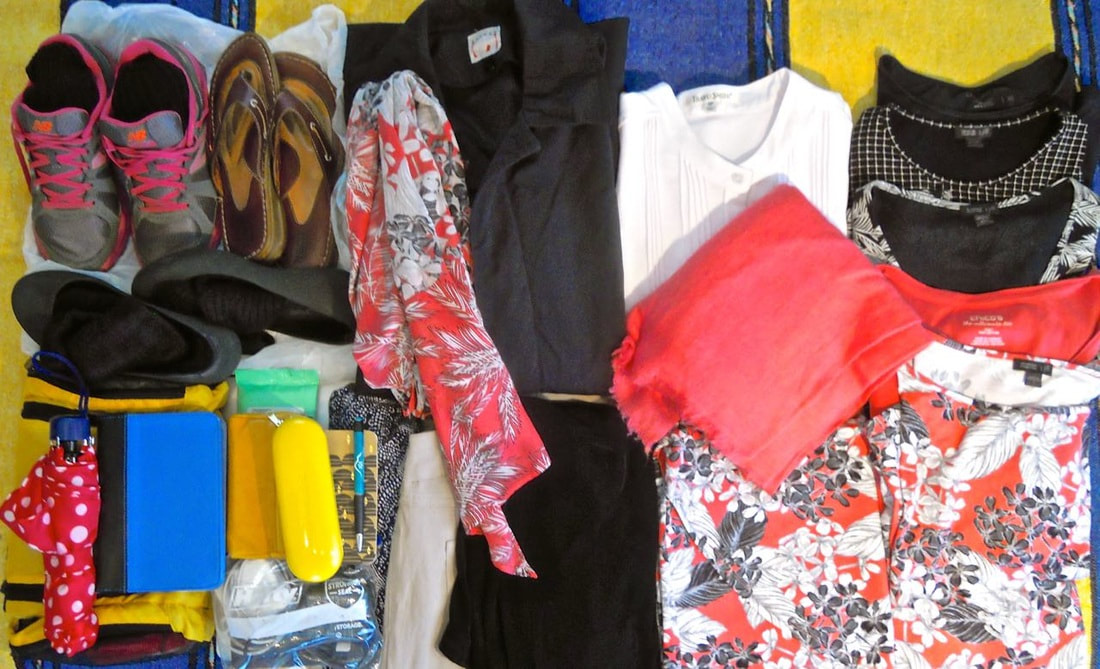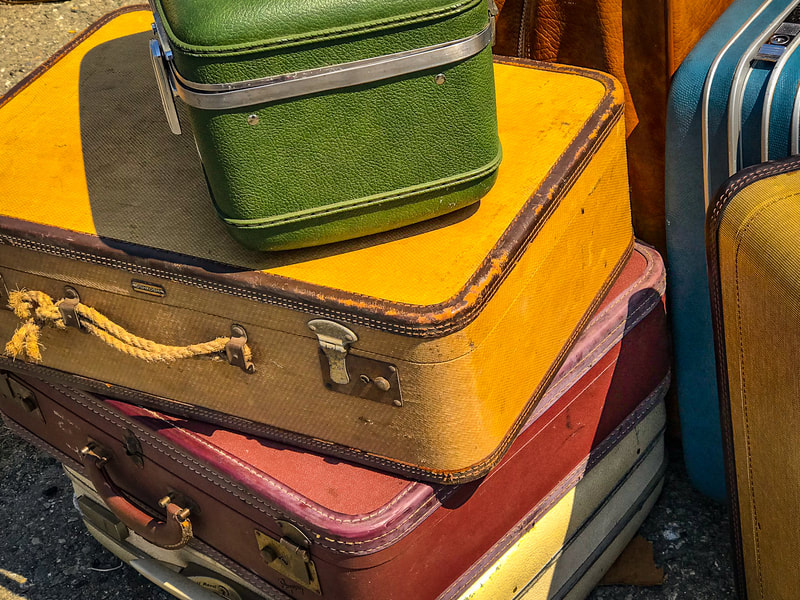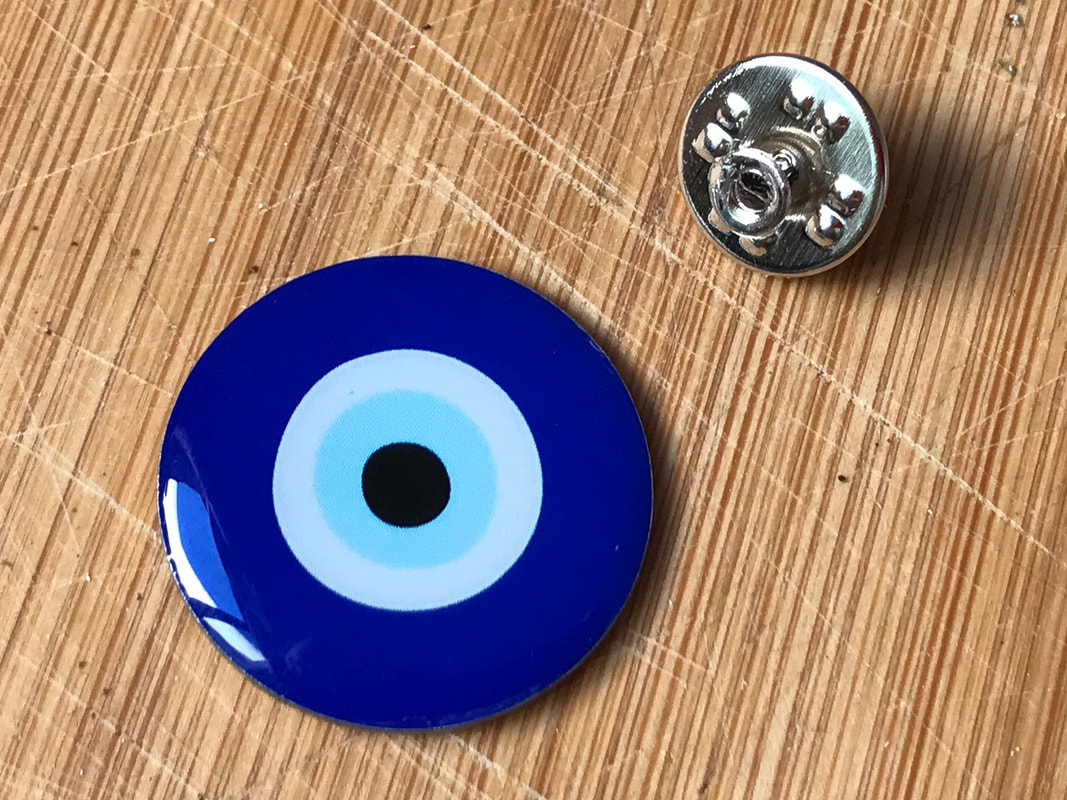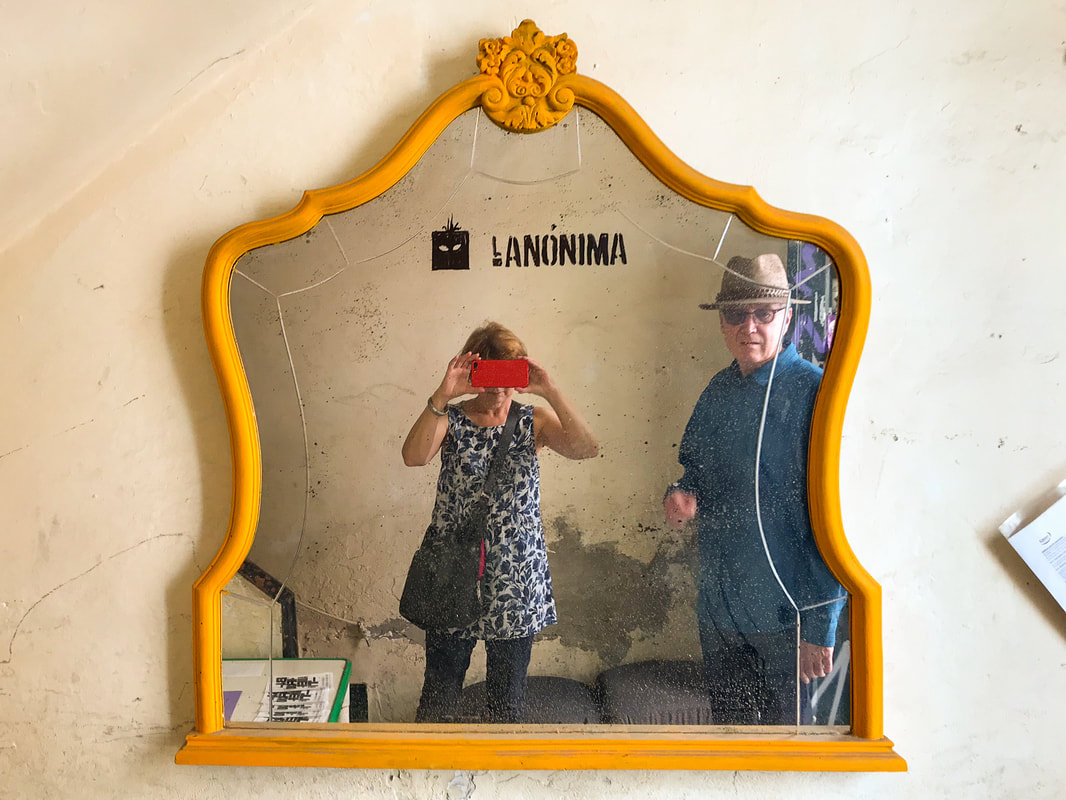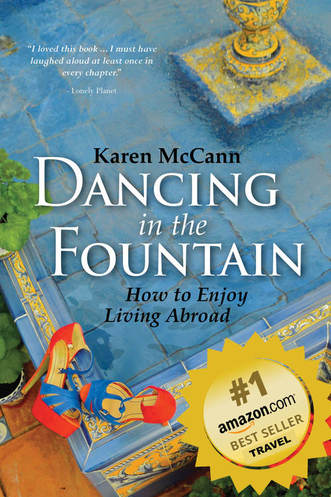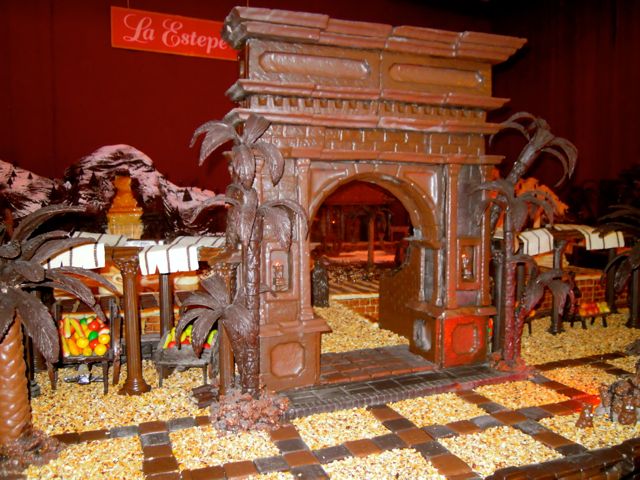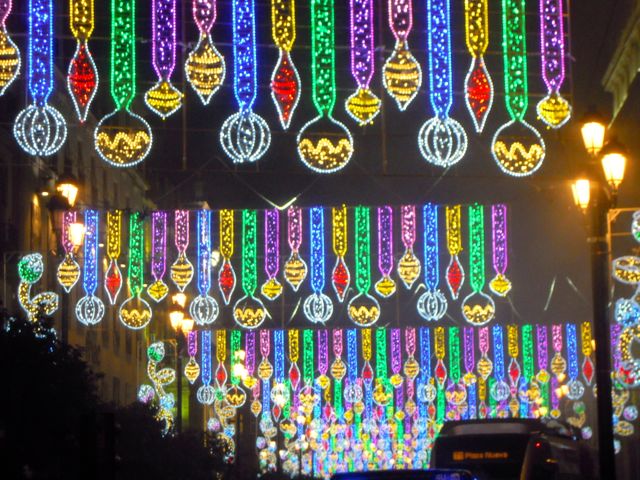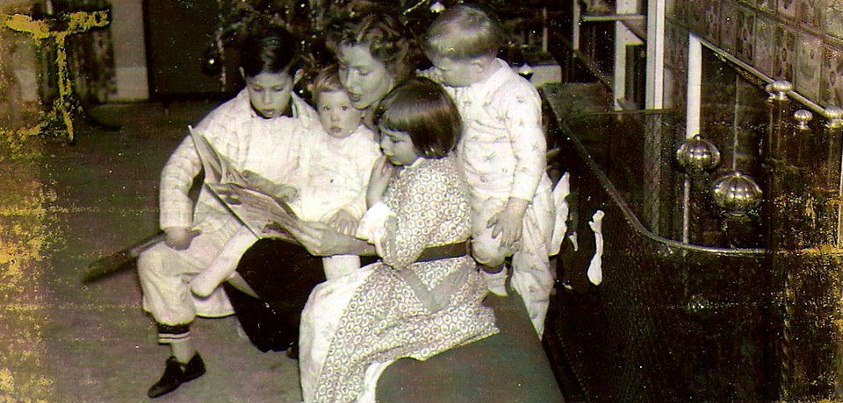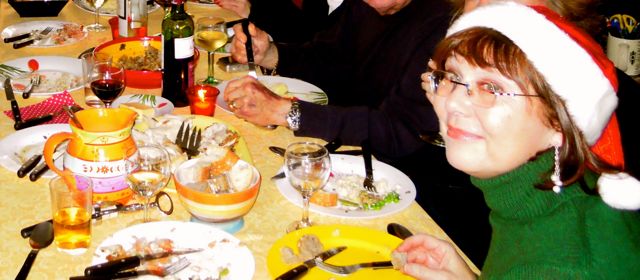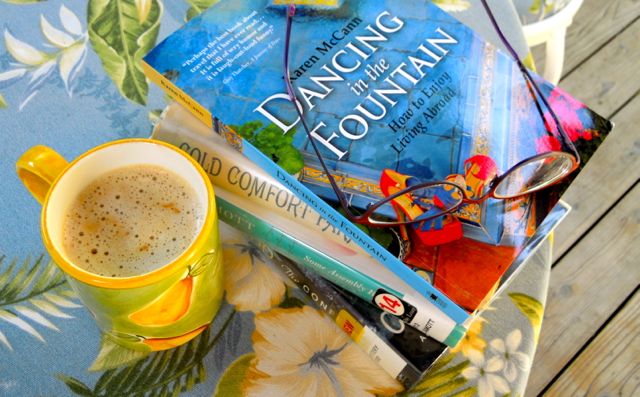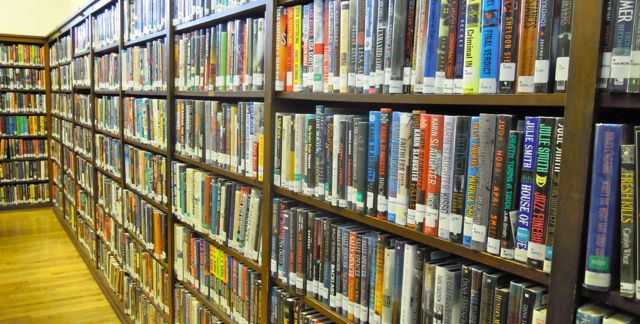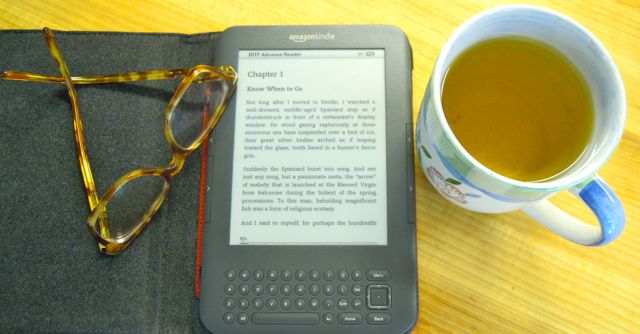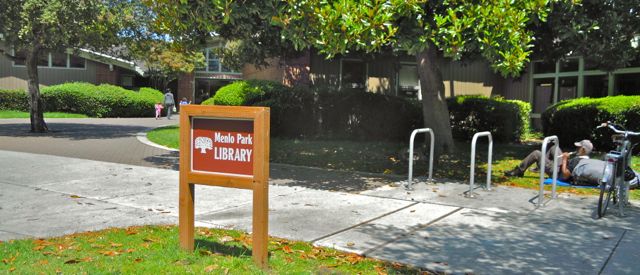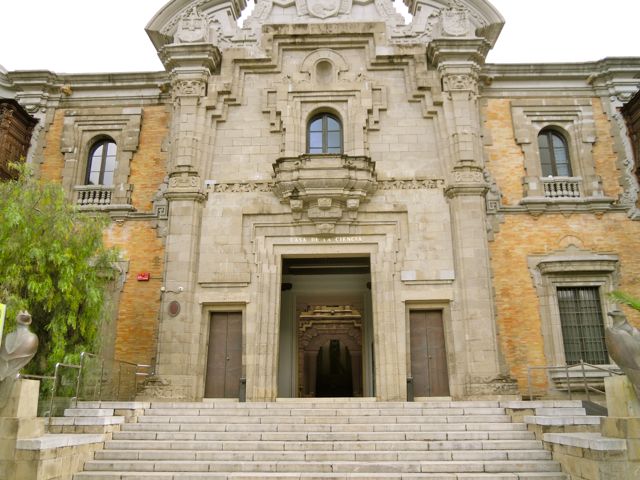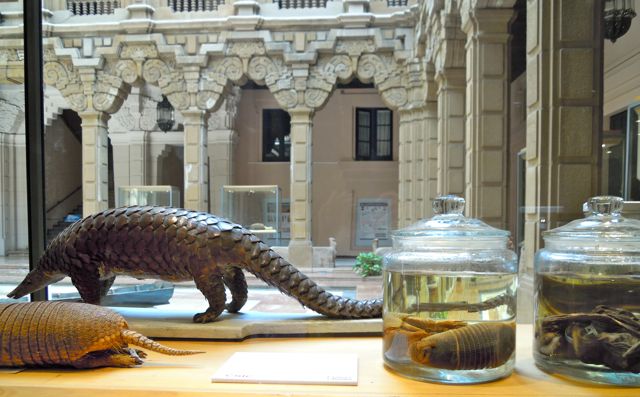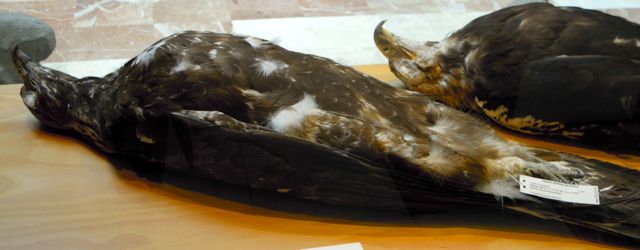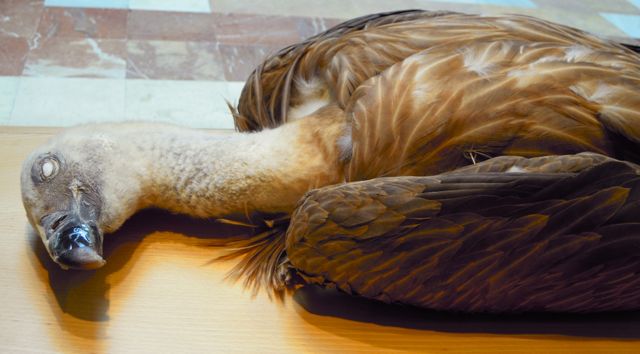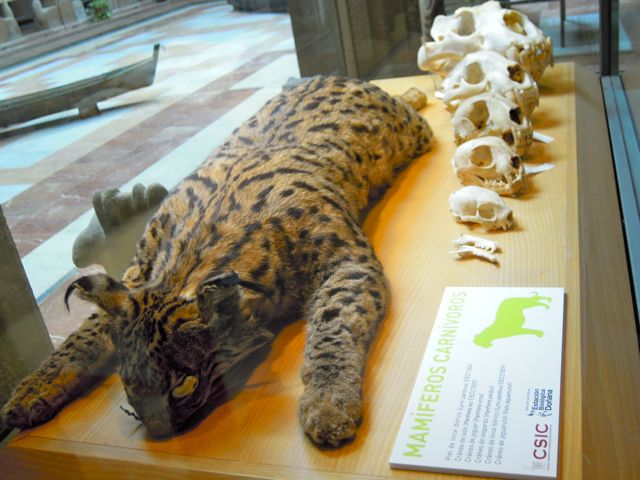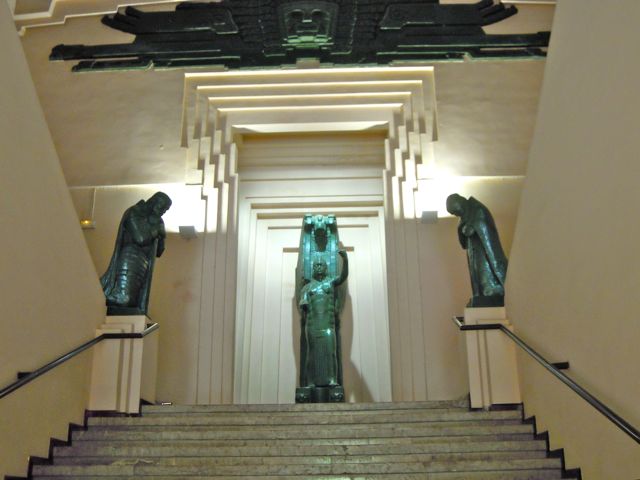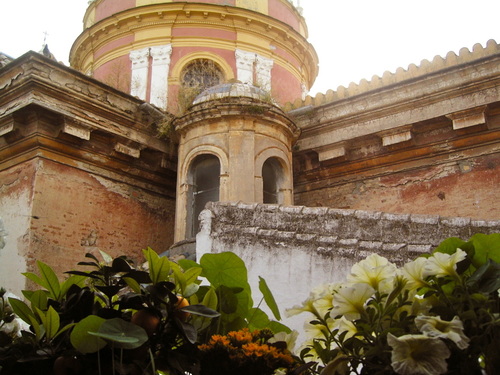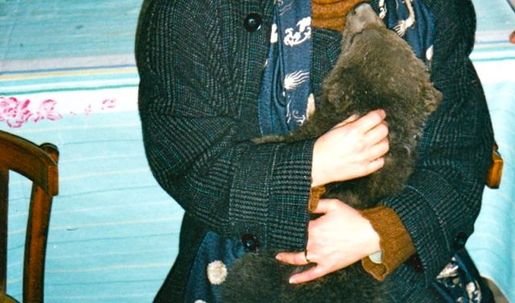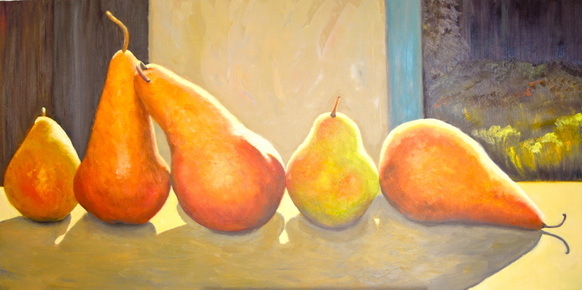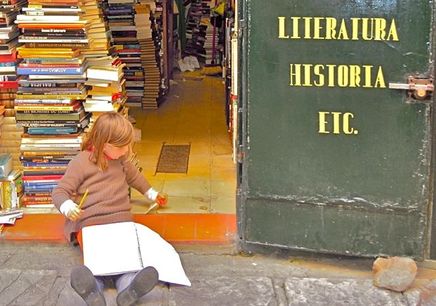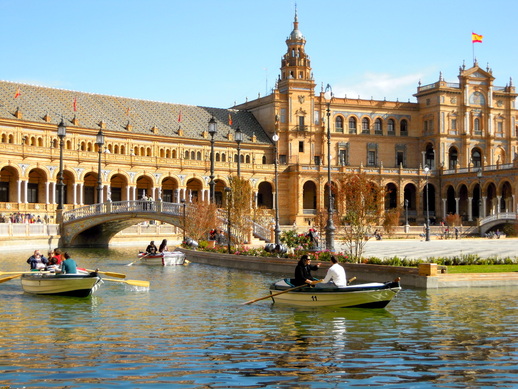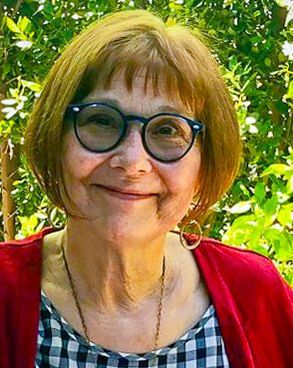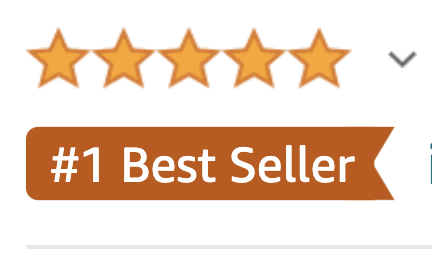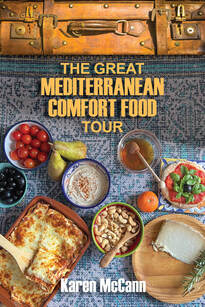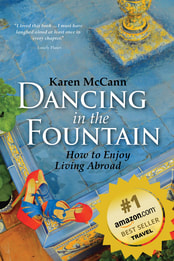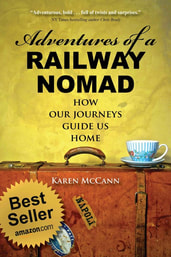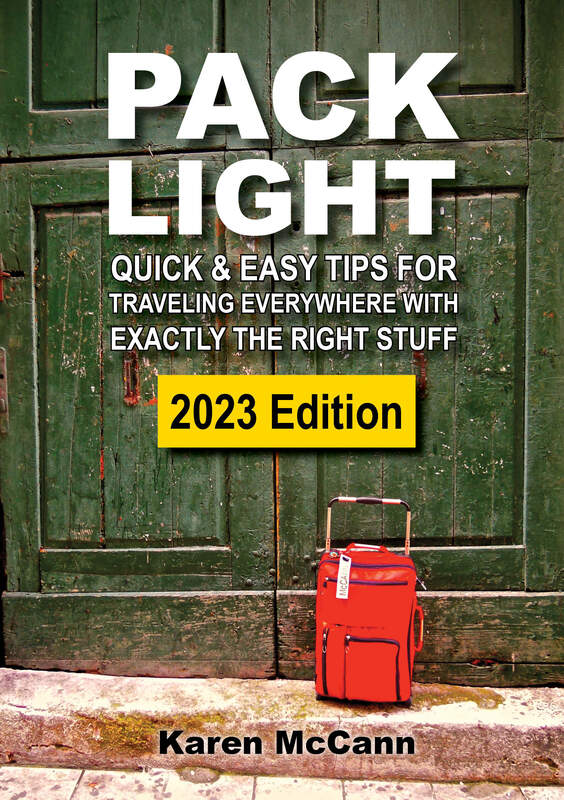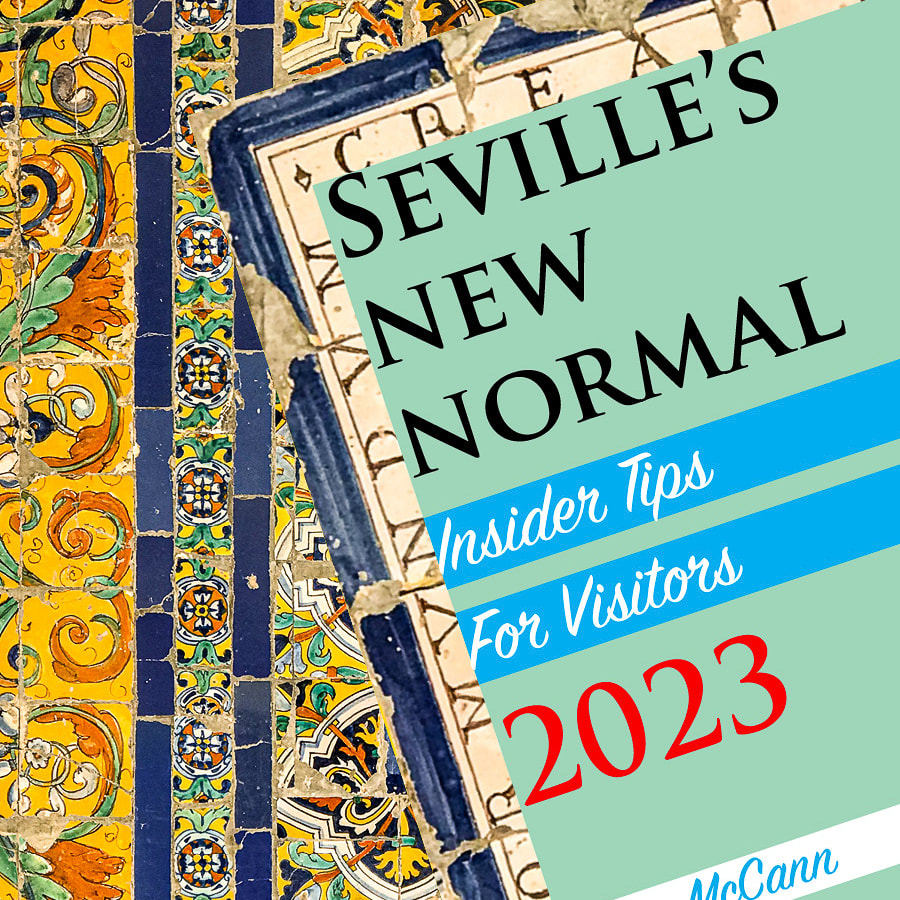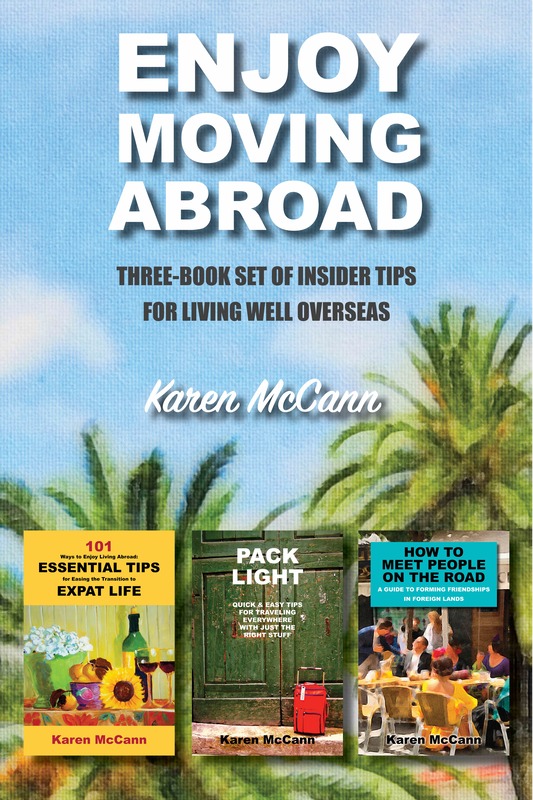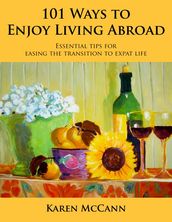|
“This place has the worst food in all of Seville,” I told a new acquaintance, as we sat down at a small outdoor table. “And the staff is downright hostile. We eat here every week.” The restaurant (which shall remain nameless) is strictly old school with dark wood, tile floors, a long bar, and a giant espresso machine. It happens to be the only eatery within shouting distance of the yoga studio I go to on Saturday mornings, and as everyone’s weekends are busy, we opt for the convenience. Over the years, the quality of the ham (a mainstay of breakfast in Seville) has deteriorated from passable to leathery to ghastly. And don’t even think about asking for any newfangled nonsense like whole wheat bread or avocado because it’s simply not happening. But it’s the hostility that’s truly astonishing. Maybe it’s because we arrive just before noon, the traditional cut-off for serving breakfast, forcing them to toast bread and make coffee for an extra fifteen minutes. “But isn’t that what they’re in business to do?” newcomers always ask in bewilderment. One would think. Maybe it’s because our yoga class is taught by an Englishwoman and attracts foreign students; they might feel we’re lowering the tone of the establishment. Who knows? Whatever sparked the conflict, they’ve taken the battle to the bathrooms. The Ladies’ lost its toilet seat ages ago, and a rag is now duct-taped in the opening that once held the doorknob. The automatic light shuts off so rapidly that even the most efficient user finds herself plunged into darkness at various awkward moments during the proceedings, requiring her to leap up and flap her hands in the air to restore illumination. Each week as we arrive, the tile floor around the rest rooms is mopped, creating a slippery hazard. Just this Saturday they upped the ante by pouring eye-watering caustic chemicals — I’m guessing bleach mixed with radioactive waste — into the toilet; the bartender walked out of the Ladies’, holding the bucket and grinning, as I headed in. Yet all week I look forward to spending time in that restaurant. Because much as I dislike the food, the attitude, and the lavatory, I love hanging out with my yoga friends. In Seville, choosing a place to eat is as much about tribal identity as it is about the particulars. As I sipped my coffee there last Saturday, I got to thinking about the three main food tribes in this city. The Traditional Tribe When I first arrived in Seville, just about every eatery served the same classic tapas, such as carrillada (pork cheeks), tortilla de España (Spanish omelet), and solomillo al whisky (braised pork with whisky sauce). Traditional bars tend to have gorgeous old tiles, ham legs hanging from the ceiling, and somebody’s abuela (grandmother) in the kitchen, making food the way her abuela taught her back in the days of Franco and food shortages. These dishes are simple, practical, and thrifty. Innovation and spices have no place on the menu. The Foodie Tribe The city’s recent foodie revolution couldn’t have been more shocking to local sensibilities if it had arrived in the city by flying saucer. Seemingly overnight we had Thai food, Peruvian-Japanese restaurants, Mexican taquerias, and impossible-to-define fusion places with amusing light fixtures and bewildering menus. If you’re heading to Seville, here are some you might want to check out. Bar Castizo, Calle Zaragoza, 6. They define their cuisine as old-school, and many dishes are, but they’re produced with artistic flourishes that demonstrate cutting-edge foodie sensibilities. The setting is charmingly hip. Don’t miss the rest rooms walls covered with domino tiles. Contenedor, San Luis, 50. Here you’ll find eclectic decor and some of the best eats in the city. On your way out, you’ll want to use the self-operated antique printing machine to print up a card so you can find your way back. Eslava, Eslava, 3. This one's so popular you'll have to come early to have any chance of elbowing your way into the crowded bar and back room; avoid the more formal restaurant area, as it's not worth the extra cost. Mamarracha Tapas y Brasas, Hernando Colon, 1 - 3. It describes itself as having urbanite conceptual character. Whatever that is. There’s a lovely vertical garden and offerings such as Thai salmon with seaweed; the food never disappoints. The Organic Tribe With the profusion of Airbnb apartments in the city, eating in has become more popular with vacationers, especially foreigners used to organic produce and products. This is a boon to the city’s up-and-coming health food industry. Some friends and I recently attended the third annual BioCultura, “an ecological products and responsible consumerism fair.” We spent several happy hours nibbling and sipping our way through the free samples, chatting with cheerfully eccentric vendors who were delighted when we purchased their olive oil, wine, and chorizo. (How is chorizo a health food? Made from pigs raised on granola and tofu, perhaps? I never did learn for sure.) I was delighted to run across some oatmeal, which is sold only in health food shops and not always easy to find. When I carried two large bags of rolled oats to the counter, the clerk shook her head. “We won’t sell you that.” “What? Why?” It took me some time to grasp what she was telling me: all the food in this, the largest booth in the entire fair, was for display purposes only. “If we sold it to you,” she explained in a “well, duh!” tone of voice, “we wouldn’t have any to display!” Ah, now I was on familiar ground. This store, like the restaurant I go to after yoga, exists for the convenience of the staff, not the customers. Perhaps the tribes aren’t that far apart after all. Many of us are lucky enough to move back and forth from one tribe to another. I make my own granola, Rich cooks traditional paella, and we often go out with friends to trendy new hotspots and old-style café-bars where abuelas rule the kitchen. And despite all the recent changes, it’s clear that the Sevillanos have not lost their traditional attitude towards eating. They have taught me that food is one of the great pleasures of life, and even the simplest meal should be embraced as if it were a gift. Because it is. YOU MIGHT ALSO ENJOY
8 Comments
Connect with Seville's Vibrant Art Community & Bring Home Memories & Mementos You'll Treasure5/9/2018 Who could resist a talisman capable of warding off the evil eye, especially one priced at less than $5? This nazar seemed like a lot of good karma for the money — until I got home from Athens and the lapel-pin promptly snapped off the back of the amulet so I couldn’t fix it to my jacket as planned. I was going to repair it, but then it dawned on me that any fetish without sufficient juju to protect itself from harm probably wasn’t capable of safeguarding me, either. Impulsively buying frivolous souvenirs is one of the pleasures of travel, and over the years I’ve collected my share of gimcrack jewelry, gaudy refrigerator magnets, and the kind of pottery and t-shirts that lose their lettering the very first time they’re washed. But every once in a while I run across something so lovely and unusual that I dig a bit deeper into my budget in order to take home something that will provide lasting satisfaction. Finding such treasures isn’t always easy, and it’s even more rare to be able to buy them directly from the artist in the studio where they were brought into being. That’s why I was delighted to connect with so many members of Seville’s creative community during last weekend’s 11th annual Barrio Abierto (Open Neighborhood) artwalk. Best of all, I obtained their permission to pass on their contact info, in case any of you want to check out their work next time you’re in town. What kind of stuff are they working on these days? I'm so glad you asked. Sculptor Marcos Domínguez was trained in Paris then returned to his home city of Seville to work in wood and stone, creating powerful images of humans, animals, and the natural world. He's just putting the finishing touches on his latest work, Oliva, carved from the stump of an ancient olive tree. Information: marcosescultor.com, facebook.com/marcoscultor. Contact: [email protected]. German-born Alexander Richter creates powerful, often playful images from metal. The chess set he created for his son has pieces up to a foot high and so heavy you'll think carefully before making a move. Information: fuirio.com. Contact: [email protected]. Laura loves creating offbeat, mesmerizing images of people who defy the classic concept of beauty. The woman at the far left in the one-piece bathing suit is her mother. Laura and partners Javi and Luis are known as El Pez Camera (the Fish Camera). Nope, I have no idea why. Hey, they're artists. Enough said. Contact: [email protected]. British-born Nicholas Chandler designs fine wood furniture and furnishings in contemporary styles, often with touches of whimsy. He arrived in Seville 16 years ago during, he says, "a mid-life crisis when my life went pear-shaped." Today he receives commissions from clients around the world. Information: nicholaschandler.com. Contact: [email protected]. Telita Laboratorio Textil is a sewing cooperative and community space launched by four enterprising young women: Lorenza Conti, an Italian who designs and makes children's clothing; Spanish graphic designer and seamstress Esperanza Covarsí; Ellavled Alcano, a dancer and designer/seamstress from Venezuela; and Danish Fraya Kanuka who creates clothing and gives clown classes to children. Information: barrioabierto.es/telita-laboratorio-textil. Contact: [email protected]. Tramallol provides a space for community members to work, play, and cook. During Barrio Abierto, Santiago created a traditional meal from his native city, Valencia, the paella capitol of the world. Rich and I took advantage of the Barrio Abierto special of the day: a couple of plates of superb paella and a two small beers for a lunch with a total price tag of 10 euros ($12). Info and contact: facebook.com/pg/Tramallol. American wood artist Chris Mott shows off his latest creations: cleverly designed natural wood bottle openers. His day job is teaching English, but woodworking is what he loves doing most. Contact: [email protected]. I was sorry to have missed this ceramic artist during the Barrio Abierto; I love her sense of style and way of capturing the fluidity of sea creatures. She markets her work under the name PotMic (POTtery ceraMIC). Information: facebook.com/kookinjapotmic. Contact: [email protected]. Miguel Conradi was proud to show me the sinuous mirror he created, hanging above Nick's chair and near Cris's bottle openers in the woodworkers' space known as Hombres de Madera (Men of Wood). Information and contact: Instagram #MiCon Furniture. If you visit one or more of these artists, you’ll find that getting there is half the fun. They’re located in some of Seville’s quirkiest neighborhoods, just twenty minutes easy stroll from the bustling downtown but a world away from souvenir shops and trendy boutiques. Plaza Pelícano, for instance, was created in the 1920s to house a series of music workshops, mostly flamenco, and the big open spaces are perfect for artists, dancers, a few chickens someone is raising, and my Saturday morning yoga class. The once-upscale Plaza Pumarejo is now the haunt of bohemians and the epicenter of the battle to maintain the area’s local character despite the rising tides of gentrification and tourism. Back in the 19th century, the Paisaje Mallol was the heart of a thriving cork industry (for all those wine bottles!) and today the warehouses, grand homes, and stables are community spaces for work and play. Arriving at one of the studios or collective workspaces, I find that climbing a crooked stairway or stepping through a massive old iron portal is a bit like falling down Alice’s rabbit hole or entering Harry Potter's Diagon Alley. You never know what you’re going to find. There are those who say the world, like my amulet, has lost its magic, but I say those folks don't know where to look. Just check out this video of local artists making a bottle disappear using nothing but water, the laws of physics, and a little good, old-fashioned wizardry. "I loved this book. I must have laughed aloud at least once in every chapter ... The advice in the book is terrific." — Lonely Planet
"A delightfully well-written true-life adventure story. McCann's writing is inviting, immediately charming, and constantly entertaining." — New York Times bestselling author Chris Brady “I’ve got something to show you,” said Rich. “Got your camera?” We were out for a stroll, threading our way through the crowded labyrinth of pedestrian streets and alleys that make up Seville’s downtown shopping area. “You bet,” I said. He steered me into the Centro Mercantile, an old club that often houses exhibitions of dubious modern paintings and gorgeous old religious art. I took three steps into the gallery and stopped, gobsmacked by the sight of the entire town of Bethlehem fashioned from 1500 kilos of chocolate, with a river of honey running through it. Nobody does nativity scenes like Seville. I’ve seen them with live animals and birds, GI Joe action figures in combat fatigues kneeling reverently before the manger, everyone dressed in flamenco outfits, and the Holy Family tucked under the shelter of a giant ham. But this was easily the most glorious, as big as my living room and smelling like heaven. This is what’s so great about the holidays: people go completely over the top. Some of my friends have criticized Seville’s downtown lighting display as being too gaudy. But isn’t that what the year-end festivities are all about – extravagance and magic? I can remember being a small child, dazzled by the sudden appearance of holiday lights, entranced by the smells of pine and chocolate and wood fires, electrified with anticipation of the treats in store for us. Today, I live thousands of miles from my relatives and many others who are dear to me; they’re scattered around the globe from the Americas to Asia to Europe to Down Under. I’ll never again see everyone I love gathered under one roof. At holiday celebrations I sometimes feel a pang about the faces I don’t see around my table.
But I am deeply grateful that I live in an age where I can stay in close contact with those who are far away. We email, we talk on Skype, and when the stars align, we meet up somewhere and enjoy each other’s company. My social circle is no longer geographically defined. It’s a bit like iCloud; my friends are not always physically on hand, but they seem to appear when I need them most. Having friends all over the planet keeps life interesting and makes me feel that I’m a citizen of the world. And that means wherever I am at this time of year, I’m home for the holidays. I don’t know how you feel about books, but to me, the prospect of having nothing to read is right up there with being deprived of oxygen. So whenever I move, I immediately make a beeline for the public library. Sadly, Seville’s public library turned out to have a paltry supply of books, most of which looked like outcasts from private collections: dog-eared mysteries, popular novels several generations out of date, and obscure nonfiction titles that were probably written by the former owner’s great-uncle. There were two shelves of English-language volumes, mostly by Agatha Christie. I love Agatha Christie, but she’s not an ideal candidate for rereading; knowing who did it at the outset kind of takes the challenge out of the puzzle. I managed to scrounge up a few titles to check out from time to time, but the choices only grew more disappointing. Then one day I returned a book a week late and was reaching for my wallet to pay the fine when the librarian explained, more in sorrow than in anger, that the penalty for such a transgression was having my library card suspended for three weeks. I was shocked and mortified. To me, being banned from a library was like hearing the tribe had voted to abandon me on the hillside for the wolves. I slunk away, feeling like an outcast and a criminal, and never returned. It was about this time that a few forward-thinking friends started buying Kindles and Nooks, but I hated the idea of electronic books. I love the feel of paper, the crinkle of turning pages, the smell of the ink and, in my own books, the coffee stains, pressed flowers and other reminders that this book and I share a past.
That attitude lasted about 15 minutes after Rich bought me a Kindle. I realized that I was just like the folks back in 1455 who said, “Printed Bibles? To me, it’s just not the word of God if it isn’t hand lettered by monks on sheep vellum with gold curlicues and little illustrated scenes tucked into the capital letters.” It’s the content that counts. As long as it’s delivered in readable form, the curlicues and sheep vellum really aren’t vital to the process. As my book Dancing in the Fountain gets launched over the next few weeks, I’ll be interested to see how many people buy “real” books and how many opt for the e-reader edition. I already know that I’m giving one of the first printed copies as a gift to my library of origin in Menlo Park, California, where I checked out books from the age of 8 to 18. It’s a tiny token of my appreciation for the countless hours of pleasure and inspiration I found there. Thanks, Menlo Park Library! They call it Casa de la Ciencia, the House of Science, but it’s more like a House of Horrors. Rich and I were passing through Seville’s Maria Louisa Park on Saturday morning and noticed the open door. We knew the building, the spectacular Peruvian Pavilion from the 1929 Latin American Expo, but we never realized it was a museum. Unsuspectingly, we stepped inside. The main hall is filled with exhibits that look like they belong in the laboratory of a mad scientist. Yes, those are stuffed armadillos, and the jars hold baby armadillos, a clutch of bats and a chipmunk, suspended in some viscous liquid. Egad! Moving on... The next grisly exhibit is more like a mortuary: bird corpses, laid out on a slab and labeled with toe tags. All that’s missing from this one is a chalk outline. And for some reason, they sealed up the victim’s beak with scotch tape. Torture? Gang initiation gone wrong? A warning to others not to talk? Oh my God, Fluffy! What have they done to your eyes? Your beautiful lynx eyes? At the back of the exhibit room lies this holy of holies. We were far too terrified to ascend the steps and confront whoever or whatever was the mastermind behind this monument to unspeakable practices. Rich went back to the first exhibit. “Wait, is this one moving??”
We fled back out into the light of day, vowing we’ll never, ever go back. This interview just appeared on the popular expat website, Costa Women. As it's a members-only site, I got special permission to reprint it here, so you'd all have the chance to see it. Introducing Karen McCann Did you find Spain, or did Spain find you? I kind of stumbled across Spain on my way to Italy. Stopping in Marbella to visit friends en route to Florence, I found I really liked Andalucía. Then my husband told me he’d always wanted to learn Spanish. I believe his exact words were “How hard could it be?” (I think we all know the answer to that!) And Seville, tell us more From Marbella, I took a side trip to Seville and fell in love with the nutty mix of vibrant street life, age-old traditions and gorgeous 16th century architecture. Seville is like New Orleans, a grande dame who is magnificent long past her prime. And she has 3000 tapas bars; I have vowed to sample them all. How did you become a travel writer? In the US, I did more serious journalism, but that just doesn’t offer the same scope as describing what it’s like to eat fried flies in Thailand, buy a blowgun from a shaman in the Amazon, swap jokes with the Pope of Egypt or play with a baby bear in the former Soviet Republic of Georgia. I’ve just written a book about my experiences in Seville, but these other stories kept trying to sneak into the book, so I started a travel blog to give them a place of their own. Somewhere you have always wanted to travel but not visited yet? There are tons of places I’d like to visit. A friend’s husband was once offered a job in Mongolia, and I immediately told her, “Lucky you! What an adventure!” She said, “Two years living in a yurt in a remote mining camp in Mongolia – what part of that sounds like fun to you?” I could see her point. It would make a great blog post, though. Enjoy Living Abroad; what would you say is the most important part to settling in “abroad” To me, the key is mentally unpacking your bags. Years ago I moved from San Francisco to Cleveland for my husband’s job, and by a weird coincidence, the woman across the street had just done the same thing. She told me every night she dreamed of California and woke up with a hideous shock at finding herself in Cleveland. I built a wonderful life in that community, but to this woman it was like being condemned to live in a yurt in a remote mining camp in Mongolia. She never mentally unpacked her bags, hated being there and soon departed for another life. About Karen, a hobby you would like to share When I arrived in Seville, a Spanish friend convinced me to join her art class because it would be good for my social life. Painting sessions were held in a cramped, poorly ventilated classroom in a high school that was kept under perpetual lockdown in a barrio an hour away by bus, on the edge of the one seriously scary and dangerous neighborhood in the province. The first thing I was told was never, ever to use the school bathrooms; I never did find out why, and it was probably best left that way. But I rediscovered a love of painting and have been doing it ever since. Where are you from originally? I’m a fourth-generation Californian. My great-great grandmother came from England to homestead in the Midwest, my great-grandmother travelled west by covered wagon and settled in Los Angeles, and my grandmother scandalized the family by becoming a silent film actress. My mother went to Stanford, and I grew up in what we called the Peninsula, a place the world now knows as Silicon Valley. Something we wouldn’t necessarily know about Karen I once joined a circus. I was stranded in a small California town with some college friends, and at a coffee house I met a teenager in a pith helmet who told me he was in town with the circus and they needed some extra hands. Before I could say “big top” I had a job selling popcorn when the regular popcorn lady was busy working as a clown. The job paid $35 a week, and I had a shot at becoming an apprentice clown. It was tempting, but in the end, I went back to college. If you were struck on a desert Island what would you have to have with you? Books. After that, maybe food and water. What book do you have bedside your bed at the moment? I am in the middle of No Time for a Siesta by Costa Woman June Wolfe. It’s great fun reading about someone else’s expat adventures, especially when written in June’s lively and engaging style. I like her title, which would never have worked for my book, as I always take a siesta. Waking up a second time each day, I feel like I have 14 mornings a week. What do you snack on when you write? I drink lots of tea. And every once in a while, when I feel my brain needs extra stimulation, I eat chocolate. I don’t always keep it around the house, and sometimes my husband finds me burrowing into the back of the cupboard in search of crusty old baking chocolate or half-stale cookies, muttering dementedly, “Come on, I have to get this chapter finished…” He’ll ask, “Should I be seriously alarmed? Or are you just on deadline?” What other travel writers would you most like to sit next to at dinner? Among others, I’d love to sit with Bill Bryson, an American who lived in England for many years. He once said, “Coming back to your native land after an absence of many years is a surprisingly unsettling business, a little like waking up from a long coma.” I find this true even if I’ve only been away six months. America is something you have to stay in practice for. I visit the US twice a year, because I don’t want to lose my touch, but I spend eight months a year in Seville, because that’s where my heart is. You have a book coming out; tell us more
Dancing in the Fountain, which will be out this summer, is my book about Seville and how living abroad can be a wonderful opportunity to hit the re-set button on your life. The title comes from one blazing hot night when my husband and I were sitting on the edge of a big stone fountain. We began dabbling our feet in the cool water, and the next thing I knew, we were wading then dancing in the fountain. It’s actually legal to do this in Seville, but an old man passing by growled at us, “Hey you two, is that any way to behave? You wouldn’t do that back where you come from.” And that’s my whole point. How can we find out more (website, Facebook, Twitter etc.)? My website enjoylivingabroad.com has snippets from the new book and photos of some of the characters, including the mysterious L-F, whom we suspect of being in the witness protection program. My blog is part of the website, and that’s where you’ll find stories about my other travels. On my Facebook page www.fb.com/enjoylivingabroad I’m tracking the progress of my book, which is in the final rewrite stage and due back to my editor at the end of this month. I think I can make the deadline, but it’s going to take a lot of chocolate. |
This blog is a promotion-free zone.
As my regular readers know, I never get free or discounted goods or services for mentioning anything on this blog (or anywhere else). I only write about things I find interesting and/or useful. I'm an American travel writer living in California and Seville, Spain. I travel the world seeking eccentric people, quirky places, and outrageously delicious food so I can have the fun of writing about them here.
My current project is OUT TO LUNCH IN SAN FRANCISCO. Don't miss out! SIGN UP HERE to be notified when I publish new posts. Planning a trip?
Use the search box below to find out about other places I've written about. Winner of the 2023 Firebird Book Award for Travel
#1 Amazon Bestseller in Tourist Destinations, Travel Tips, Gastronomy Essays, and Senior Travel
BLOG ARCHIVES
July 2024
CATEGORIES
All
|
